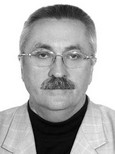The pacing and tempo of running in the analysis of the performances of the top hurdlers at the olympic games in paris
Keywords:
hurdles, biomechanical analysis, competitive activity, rhythm-tempo structureAbstract
Objective of the study was to pinpoint the crucial kinematic metrics that contribute to the success of the world's top male hurdlers in the 110-meter hurdles, we conducted a thorough examination of their performances at the Olympic Games in Paris.
Methods and structure of the study. The examination of official documents, the study of video recordings of elite hurdlers in competition, and the application of statistical techniques are conducted.
Research results and conclusions. It has been discovered that in modern men's short-distance hurdling, the runners maintain a rapid pace between obstacles, often exceeding the speed of highly skilled sprinters. The limited space between hurdles and the high hurdles force athletes to rely on speed, rather than distance, to achieve success. The running technique of the Olympic champion G. Holloway (USA) is characterized by the efficient execution of motor actions, particularly in terms of technical aspects at the hurdle distance. As the distance and competitive result increase, the athlete's pace of steps accelerates, and the speed of the hurdle step also increases. In these circumstances, the hurdle step appears to be a running step executed with a greater amplitude and a higher trajectory compared to a regular running step, while the entire distance appears to be covered in a single motion.
References
Mikhaylov N.G., Yakunin N.A., Aleshinskiy S.Yu., Lazarev I.V., Balakhnichev V.V. Biomekhanika baryernogo bega: lektsiya dlya studentov i slushateley Vysshey shkoly trenerov GTSOLIFK. Moscow, Soyuzsportobespecheniye publ. 1982. 33 p.
Ogandzhanov A.L. Kompleksnaya otsenka sorevnovatelnoy deyatelnosti i tekhnicheskoy podgotovlennosti mnogobortsev v bar'yernom bege s ispolzovaniyem videoanaliza. Vestnik sportivnoy nauki. 2020. No. 2 pp. 10-14.
Stolyar L.M., Kuznetsov V.S., Stolyar K.E. Beg s baryerami: teoriya, metodika obucheniya i trenirovka. Moscow, Prometey publ. 2005. 48 p.

Additional Files
Published
How to Cite
Issue
Section
License
Copyright (c) 2025 Theory and Practice of Physical Culture

This work is licensed under a Creative Commons Attribution 4.0 International License.
